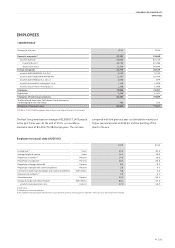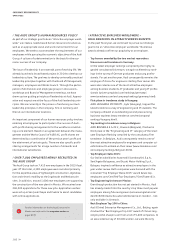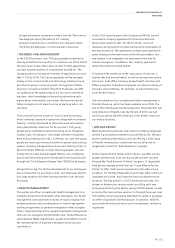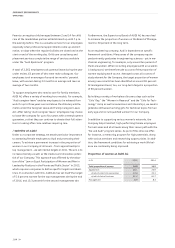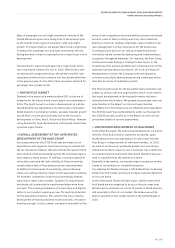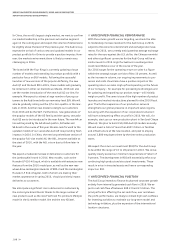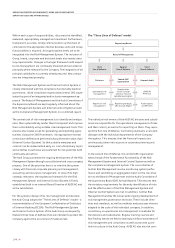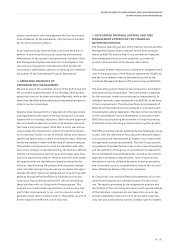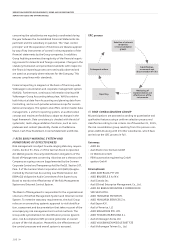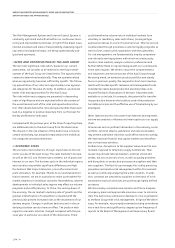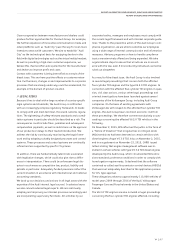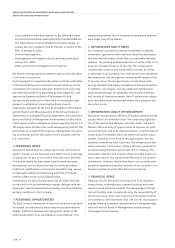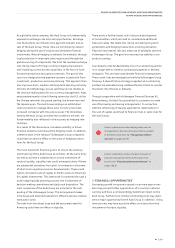Audi 2015 Annual Report Download - page 191
Download and view the complete annual report
Please find page 191 of the 2015 Audi annual report below. You can navigate through the pages in the report by either clicking on the pages listed below, or by using the keyword search tool below to find specific information within the annual report.
REPORT ON EXPECTED DEVELOPMENTS, RISKS AND OPPORTUNITIES
REPORT ON RISKS AND OPPORTUNITIES
>> 191
pliance coordinators who liaise between the first and second
lines of defense. At the subsidiaries, this function is handled
by risk and compliance officers.
As an impartial body, Internal Audit acts as the third line of
defense in examining the security, regularity and economic
effectiveness of the systemic and operational activities of the
Risk Management System and Internal Control System. The
risk early warning system and Internal Control System for
accounting is additionally subject to scrutiny by the independ-
ent auditor of the Consolidated Financial Statements.
// OPERATING PRINCIPLE OF
OPPORTUNITIES MANAGEMENT
We aim to ensure the sustained success of the Audi Group and
the consistent implementation of our Strategy 2020 by man-
aging risks from our business activities effectively, while at the
same time identifying and exploiting entrepreneurial opportu-
nities to our best advantage.
Opportunities management is integrated into the operational
and organizational structure of the Audi Group and is closely
aligned with our strategic objectives. Both risks and opportuni-
ties are therefore taken into account in all business decisions
that have a long-term impact. With that in mind, we continu-
ously analyze the international context for potential impacts
on our business model in order to identify trends and industry-
specific key factors early on (Audi environment radar). Relevant
trends are studied in detail with the help of scenario analyses.
The possible consequences for Audi are identified with refer-
ence to the strategic corporate planning, the divisions affected
and the Controlling area, with the goal of strategic early diag-
nosis and opportunity creation. Medium and short-term poten-
tial opportunities are identified and operationalized by the
divisions. Synchronizing the process with corporate manage-
ment and internal reporting ensures we can realize the oppor-
tunities identified. We aim to safeguard our long-term growth
pathway through effective efficiency initiatives such as the
continuous improvement process (CIP). We are intensifying
these activities with our Group-wide fitness program. This
program incorporates both opportunities on the income side
and further improvements to our cost structures in order to
generate a high return in the long term. Meanwhile, we aim to
further improve the efficient use of resources.
// INTEGRATED INTERNAL CONTROL AND RISK
MANAGEMENT SYSTEM FOR THE FINANCIAL
REPORTING PROCESS
The financial reporting section of the Internal Control and Risk
Management System that is relevant for the financial state-
ments of AUDI AG and the Audi Group contains all measures
that are designed to ensure the complete, accurate and
prompt communication of all relevant information.
The purpose of these measures is to minimize or altogether avoid
risks in the preparation of the financial statements of AUDI AG
and the Consolidated Financial Statements as well as the
Combined Management Report of the Audi Group and AUDI AG.
The accounting system of Audi Group companies is a fundamen-
tally decentralized organization. The consolidated companies
for the most part handle accounting tasks independently. In
individual instances, tasks are passed on to AUDI AG on the basis
of service agreements. The individual financial statements of
AUDI AG and the subsidiaries are prepared in accordance with
the applicable national legislation. The data is then transferred
to the Consolidated Financial Statements in accordance with
IFRS. Data security during data transfer to Group Accounting
at AUDI AG is ensured using a commercial encryption product.
The IFRS accounting manual published by the Volkswagen Group
is used, with the intention of ensuring uniformity with regard
to accounting and measurement principles in accordance with
the applicable accounting standards. The Audi Group account-
ing guideline stipulates further rules on the scope of reporting
and the definition of the group of consolidated companies for
the Consolidated Financial Statements, as well as the uniform
application of statutory requirements. Intra-Group business
transactions are duly reflected by means of proven processes
and instruments such as comprehensive rules on the reconcili-
ation of balances between the Group companies.
At Group level, the individual financial statements of our sub-
sidiaries are analyzed and validated as part of control activi-
ties. The reports presented by the independent auditors and
the findings of the concluding discussions with representatives
of the individual companies are also taken into account. Sys-
tematic plausibility checks are run to some extent automati-
cally, but also conducted by experts. Complex specific matters


